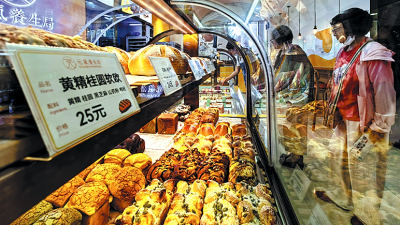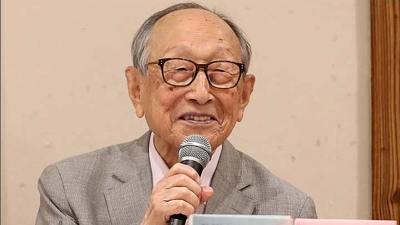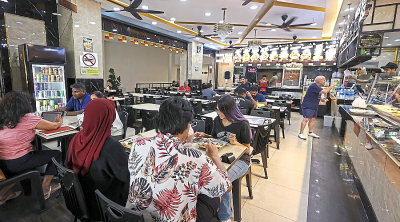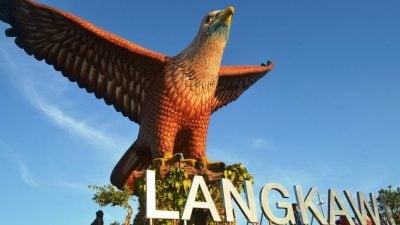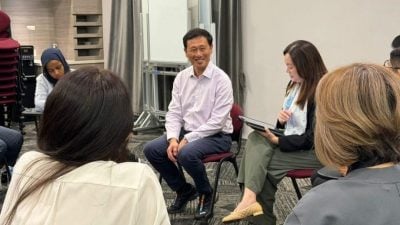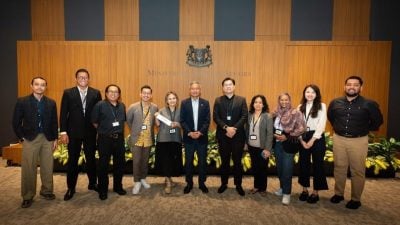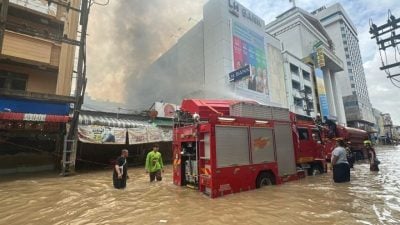
“Never kick a lump of used coal briquette; has your heart ever burned for someone?” reads one of the most beloved Korean poems by poet Ahn Do-hyun.
The resonance of this three-line-stanza poem in Korean draws its depth from the commonplace “yeontan” — the perforated, cylindrical briquettes that fuelled the hearths of most Korean households in the mid- to late- 1900s.
A few years ago, the symbolic power of yeontan became a hit for 37-year-old Jang In-young when she launched a new collection of pastries resembling them at her café in Sabuk, Gangwon Province.
“When I witnessed the long line of people waiting to buy yeontan ppang (bread), I thought a fire had broken out,” Jang recalled.
“Now, my café has earned the distinction of being the first to make a queue in the town’s marketplace.”
The idea for the yeontan brownie came from students at a local high school club, as part of a project to invigorate the town’s local economy and honour its coal mining legacy.
Jang, an alumna of that school who was then running a private piano academy, decided to turn the idea into reality.
She learned baking and studied making miniature yeontan with chocolate, butter and flour, for two years before finally launching her café in 2020.
Baked with nostalgia
Now, the edible miniature versions of yeontan have become a hallmark that turned Jang’s café into a top place to visit in the town.
Café visitors appreciate the intriguing visuals of the brownies, bringing back memories of their only source of warmth, as well as their representation of the town’s history.
A reviewer on online portal Naver lauded the delicious texture of the brownies, along with its cultural significance: “It would be a delightful way for children to learn about the history of yeontan through its engaging appearance.”
Sabuk now has less than 5,000 residents, but it was once a thriving mining town from the ’60s through the ’90s, home to the Dongwon coal mine, the nation’s largest private coal mine.
In the peak of coal mining operations, approximately 8 out of 10 households in Sabuk were involved in the industry or related market.
In 1985, the pit accounted for around 13 percent of the nation’s total coal production, employing over 6,000 miners.
From the mid-1900s to the 1980s, yeontan, often referred to as “black pearls” in Korean, was the primary heat source in most Korean homes until it was replaced by gas boilers.
This shift was primarily driven by government initiatives due to coal’s decline in profitability, coupled with environmental and health concerns.
The Dongwon mine closed in 2004.
What happened to Sabuk is akin to what numerous mining communities worldwide have endured during a massive wave of pit closures: many lost their job and the local economy lost its vigour.
In Korea, the number of coal mines, which stood at 374 in 1988, dwindled to three as of December this year.
In June, the nation’s first coal mine, Hwasun coal mine in South Jeolla Province, marked the end of its 118-year history, leaving a total of three still in operation, two public (Taebaek Jangseong and Samcheok Dogye) and one private (Kyungdong Sangdeok), all in Gangwon Province.
The state-owned Korea Coal Corp. plans to close the remaining two state-run coal mines by the end of 2025.
The yeontan miniature cakes were created as part of efforts to “honour Sabuk’s coal mining legacy and help invigorate the local economy,” Jang said.
‘Black pearls’ still burning
While the local mining industry is disappearing into history, coal briquettes are still necessary for some, ranging from low-income households to non-residential settings in need of economical heating methods like public bathing facilities, agricultural operations, restaurants and commercial establishments.
A local restaurant worker in Sabuk, for instance, said she uses coal briquettes to cook beef, as it not only evokes a sense of nostalgia for customers but also burns very hot, imparting a unique flavour.
Another briquette user is Jang Hyun-pil, a 64-year-old who runs a cosmetics store in the same town. He said coal briquettes have been essential for his store for more than 20 winters.
“I have to maintain an optimal room temperature for cosmetics. Otherwise, the bottles would blow out,” Jang explained.
“I have other means of heating as well, but using briquettes is the most affordable way as long as a proper ventilation system is set up.”
Across the country, there are people still dependent on coal briquettes to endure the winter.
According to a survey conducted this year by the welfare group Yeontan Bank, approximately 74,167 households still rely on coal, comprising about 0.3 percent of the total. Over 85 percent of them are low-income households.
Each winter, volunteers — including politicians and celebrities — participate in briquette donation and delivery events for coal-reliant families.
The government provides financial assistance through vouchers for them to purchase and stockpile briquettes.
Jang’s confections also go beyond nostalgia. The name of her café, “Gamtan Café” in Korean, is meant to refer to coal briquettes that touch people’s hearts.
“I’ve been making donations to charitable organisations and schools, aiming to assist those in need,” she explained.
She has been actively contributing to charitable causes by donating a share of her profits.
Additionally, she is dedicated to spreading information about welfare programs to support former coal miners affected by pneumoconiosis.
In considering the future of towns once heavily reliant on coal mining, she expressed concerns about their economic viability.
She emphasised the need for robust business models capable of bolstering local economies.
“Despite my town witnessing the emergence of new businesses like casinos and resorts to replace the declining coal mining industry, other regions predominantly dependent on coal mining might face substantial financial setbacks unless they develop practical strategies to embrace new industries for their local economies,” Jang remarked.
Furthermore, Song Ju-han, an official from the Coal Town Memorial, stressed the significance of developing infrastructure in remote regions to address this issue.
“To facilitate the growth of alternative businesses to coal mining, the foremost priority is to establish proper infrastructure that improves accessibility from metropolitan areas,” Song said.
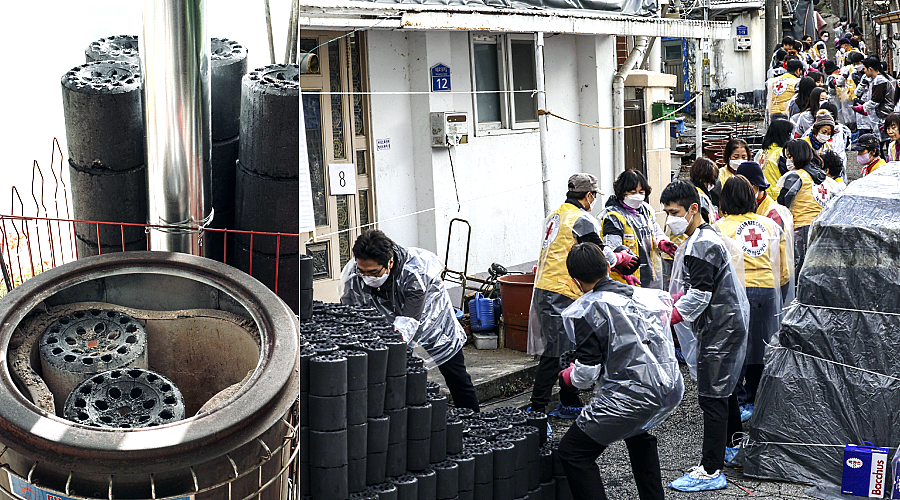
ADVERTISEMENT
ADVERTISEMENT






